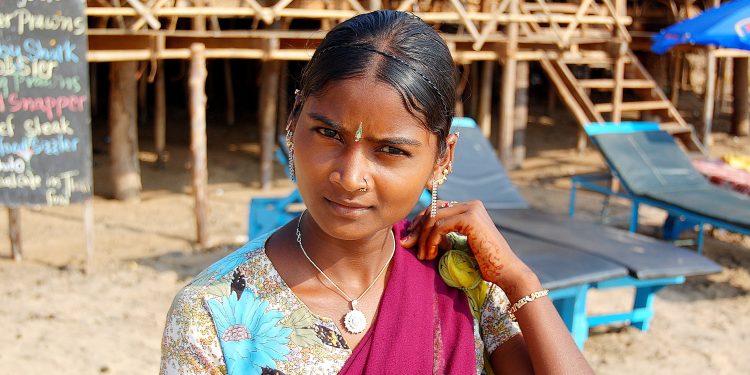The Lolita Effect: How Indian Culture Sexualises Young Girls

On Independence Day, a 12 year old girl on the way to school was raped by a middle aged man in Chandigarh. Even though this horrific incident is a malicious crime against humanity, this is not as shocking as it should be. India has a sordid history of rape of different kinds including juvenile and child rape. Al Jazeera conducted a study where they concluded that over 34,000 rapes had taken place in 2015, not including the numerous assumed unreported cases. Over 10,000 of the cases were reported by minors, some even younger than 6 years old. Young girls are sexualised and seen as sexual objects regardless of their age. Sexualisation refers to the placing of a person’s value on their sexual appeal or attractiveness. Why are young girls raped and sexualised? Why are they even regarded as sexually attractive? The answer lies in the mentality behind Indian culture and society. The sexual abuse of girls is the result of patriarchal notions about women, the enforcement of hypermasculinity and the image of women and young girls in media: all of which provide the foundations of the structure of our society.
The Ideal Woman
“Girls should be married at the age of 16, so that they have their husbands for their sexual needs, and they don’t need to go elsewhere. This way rapes will not occur.”
This is a quote from Om Prakash Chautala, the former chief minister of Haryana; someone who was in a position of power and a position of influence. His words voice the basic mentality of most Indian men. Women must not engage in sexual activities outside of marriage or they will invite rape. As preposterous as it sounds, this kind of thinking has a deeply-rooted origin in our nationalist and patriotic values. For decades we’ve chanted “Bharat Maata” in reference to our beloved country. We associate a virtuous and honourable woman with our country. But what does this virtue really mean? “Bharat Maata” symbolises a motherly figure with self-sacrificial and most importantly, domestic qualities. This image perpetuates a standard for women and thus, they are placed in the role of domesticity which resonates with the values of India. However while they are adulated for these qualities, they are repressed by the control of their sexuality and personal desires. A woman is only seen as pure and domestic if she serves her husband and does not indulge in sexual desires. Marriage, therefore, is seen as a means to “control” women and their sexuality. Girls, at a young age, are taught to uphold this stereotype, to remain untainted and pure till their marriage with no means of expressing or even exploring their own sexuality. Girls therefore grow up with a repressed sense of self. Moreover, the perpetuation of this stereotype of an ideal Indian woman gives men access to a loophole. If a young girl indulges in acts that betray her purity, she is further objectified and sexualised. This explains the mentality of them men in the Mathura rape case. In 1978, a teenager named Mathura was raped by a constable who justified the rape by calling her a “loose” girl because she had a boyfriend. However, in some juvenile and child rape cases, it is merely the idea of “tainting” a young girl’s innocence that is desirable to some. The act of indulging in sexual activity with minors is against societal and moral law and the forbidden nature of the act is what becomes attractive. Girls in India live in a conundrum, if they claim autonomy over their bodies they are regarded as sexual objects. But even if they remain as pure and innocent as Indian society dictates they are still highly sexualised.
The Perverse Effects of Hyper-Masculinity
Perhaps it is not the taboo element of child rape or the depraved notion of taking away a child’s innocence that attracts rapists but the very idea of purity and childishness. This seemingly absurd mentality resides in the patriarchal ideals upheld by our country. Indian society is based on a hierarchical structure where power comes into play in every facet. Whether it is caste differences, class differences or gender inequality, power imbalances lead to entitlement. The imbalance of power between men and women results in the entitlement of men. Thus, men who have raped often believe they are entitled to do so. The patriarchal notions in India dictate that men must play the role of the protector, they must take care of their families. The problem with this mentality is that in conjunction with the perspective of women as the mothers, whose sexuality is dictated by their husbands, men feel the need to uphold toxic notions of masculinity. In order to play their role and thus enforce woman to do so too, men feel obliged to force women into this role of purity. This pretense creates a cult of masculinity which has a perverse effect on women and young girls: the virtues of the ideal woman become sexually attractive in an almost Pavlovian manner. Young girls represent these virtues most prevalently and thus sexualising them is normalised. However, there may also be a biological element that explains the attraction of men to young girls to an extent. In a study conducted on Bulgarian men, the researchers displayed photographs of young girls to two different sets of men and giving them different age ranges for the girls and asked them to rate their attractiveness. In one set the age range was 14-15 while in the other it was 16-17. The study showed that the men tended to find the same girls more attractive when they perceived them as older suggesting that men downplay their attraction to adolescent girls. However in cultures like India, men may be more inclined to portray their attraction as a result of the cult of masculinity and thus different societal norms reinforced in Indian society as child marriage is still an occurrence.
Portrayal of Women in Media
Media often promotes unhealthy notions of gender and sexuality and Indian media is no different. Indian cinema propagates stereotypes most effectively. Women are portrayed as sexual objects in movies, and at the same time are given domestic roles and docile personalities. This dichotomy creates a sexual being devoid of any personal ambition whose sole intent is to indulge the male audience. Sexualization of women on screen affects young girls. Their perceptions about their appearance, how they should dress, how they should behave are influenced by these ideas. Young girls believe they must adhere to these perceptions and if they are lacking, their mental and physical well being becomes compromised. More pertinently, media continues to play a role in normalising the sexualisation of girls by the blatant sexualisation of women.
Conclusion
We, as members of a patriarchal society, have all played a role in the disfigurement of a young girl’s childhood. If we hope for change, we must begin by changing our ideas of gender, of the capabilities of men and women alike and of how they impact those who are influenced by us and our actions. Maintaining the innocence and purity of girls without regarding these virtues as sexual must be learned and promoted. Those in a position of influence, however small it may be must use their power, not to abuse as many have, but to learn and teach in turn. Progress in a society seeped with values that we regard as traditional is difficult as we often fail to realise how harmful those traditional values can be. However, the younger generations have a role to play in realising the flaws of culture, of tradition and practice and to create a safer and promising environment for girls around the country.




